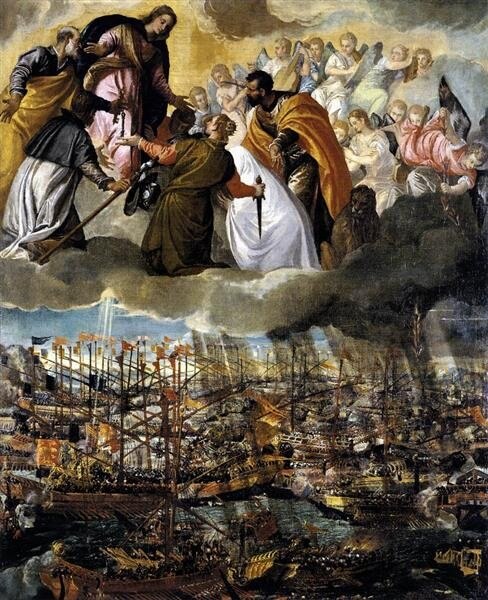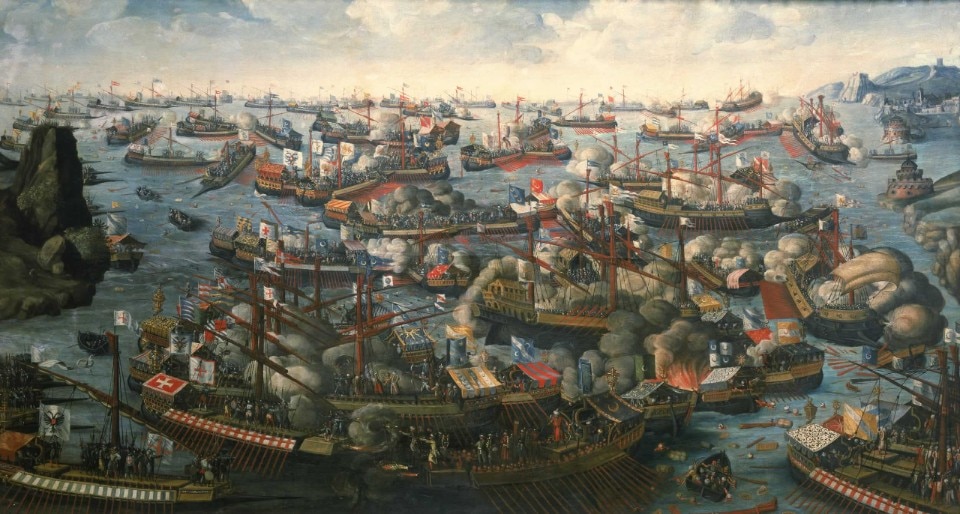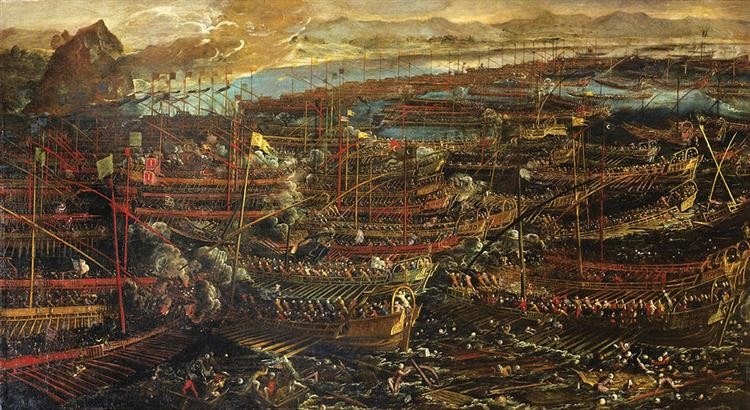On 7 October 1571, John of Austria, son of Charles V, commanded the close-order deployment of its fleet in the Gulf of Corinth, near the town of Lepanto. The fleet of the Holy League, a coalition of the Papal States, Spain and the Republics of Venice and Genoa was about to attack the Ottoman fleet. The Christian ships, or rather the Christian galleys, settled the clash in about seven hours. It was the 7th of October, an epic day, the day of a clash between West and East – the Battle of Lepanto.
In his Devil’s Dictionary, Ambrose Bierce defines the word “battle” as follows: Battle, n. A method of untying with the teeth of a political knot that would not yield to the tongue.
In the wake of the war between Russia and Ukraine, let us retrace this well-known battle through famous works of art.
Produced in the workshop of Paolo Cagliari, better known as Veronese, following the master’s design and direction, the painting celebrates the victory of the Holy League against the Ottoman fleet, detailing the key role played by Venetian ships.

Venice, the “Serenissima”, is depicted as a woman dressed in white, introduced before the Virgin by Saint Justina and Saint Mark, while Saint Peter and Saint Roch are shown on the left. The rays of light in the centre of the scene, right under the divine cloud, emphasise the favour of the saints and God, while the shadows overlook the enemy ships. The lower half of the painting shows the events of the battle – rhythmic but at the same time disjointed, in stark contrast to the upper half.
The group of angels, right behind the saints, seems to encourage the rightmost one, who’s wearing a red robe, to shoot arrows at the Ottoman fleet.
A divine representation, with a deus ex machina that solves everything.

Jacopo Robusti, also known as Tintoretto, made an intelligent, well-studied, perspective and triumphal painting crowded with ships, armaments and soldiers.
The sumptuous galleys advance proudly, as everything is precisely detailed, and every part is minutely described, symbolising the importance of the event.
The order of the fleets is disrupted while those in the distance appear more patient. At first glance, the scene is convulsive yet extremely orderly. Tintoretto changes the subjects but does not stray from his style where everything appears magnificent, and orderly.

7 October 1571 was a day that changed an era and marked a moment in history. An expected victory and a hoped-for peace.

